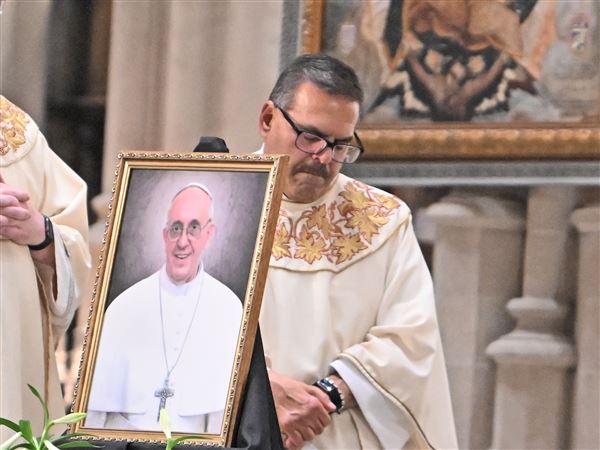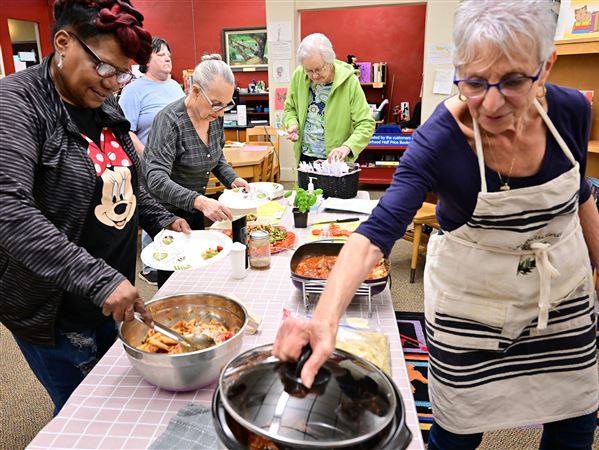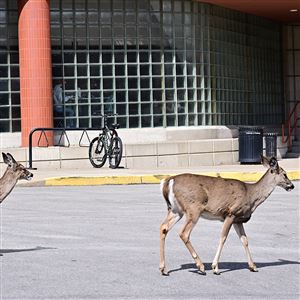Around 1931, Felisa Vanoff stood on the sidewalk outside the family business and watched her grandmother’s life be auctioned off. The bankrupt woman was losing her general store. In the midst of the Great Depression, her grandmother had refused to charge people who couldn’t afford food.
The image had a profound and motivating impact on the young girl, who would grow up to be anything but ordinary. Thirteen years later, the Beaver County native drove friends home to Ambridge from New York City, where they all lived. Among them was a young man named Andy Warhol. She had decided to take the budding artist under her wing, so in her car along the route home, the teenager gave him career advice.
Mrs. Vanoff died May 29 in Beverly Hills, Calif., after an extended battle with cancer. She was 89.
The fight was characteristic to all who knew her. She was a dancer, choreographer, producer and force to be reckoned with.
The first woman to choreograph the acclaimed Harvard Hasty Pudding Review and one of the first women to go to Hiroshima after the bomb was dropped at the end of World War II, Mrs. Vanoff was often groundbreaking. She couldn’t have cared less about fame, though.
“She was a military-minded dancer. She only looked forward and wasn’t at all concerned with gender,” said her son Nick Vanoff Jr. of Fort Lauderdale, Fla. “To her, it was simple. She was the best in her field.”
She was born Phyllis Elizabeth Caputo on June 11, 1924, in Ambridge. She left for New York after she graduated from high school.
The teenager lived in Manhattan rooming houses packed with girls setting their sights on steady, department-store jobs. Holding fast to her dreams, she began training with Vinecenzo Celli, master of the Ballet Russe.
That experience led to 18 months in Mexico City, studying Flamenco dancing with Jose Fernandez.
When asked how his mother knew she wanted to dance, her son laughed. “How do you know water is wet? She knew.”
In 1944, the U.S. Army recruited her to stage-manage the USO throughout the Pacific. Quickly attaining the rank of captain, the young woman “island-hopped” her way to Hiroshima. It was there that she found an unbroken Japanese doll in the rubble of a flattened department store. She carried it through the Pacific for six months until she could get home.
After the war, living in New York, she had caught the attention of a 15-year-old boy. Seeing her in the ballet, Nick Vanoff joined the opera to help move sets. Eventually wedging himself into the dance troupe as an extra, Mr. Vanoff — six years her junior — worked for a year and a half to have a conversation with the performer.
“I think they call it stalking now, but she didn’t enjoy hanging out with old people, even when she got old,” joked their son.
After they wed, Mrs. Vanoff taught English to her husband, who was a native of Macedonia, and found him a job holding cue cards for Perry Como. Her husband went on to win a Tony for the couple’s co-produced “City of Angels.” When he died, she created an annual benefit called Salon at the Taper. The charity funds reduced-price tickets, or “Nix’s Tix,” to all Los Angeles Music Center performances.
Mrs. Vanoff wasn’t one for retirement. When she could no longer dance, she choreographed. She later was on the board of the Joffrey Ballet, the Blue Ribbon Music Center, the Heinz Awards and the Colleagues.
“Some people get out of bed every morning. My mother levitated,” her son said.
“It was a big world, and she wanted to see as much of it as she could.”
Mrs. Vanoff was buried in Sun Valley, Idaho, where she skied every winter until last year.
There will be a memorial service later this month in Beverly Hills. In addition to her son, she is survived by her sister, Paula Caputo, and two grandchildren.
First Published: June 26, 2014, 2:35 a.m.

















